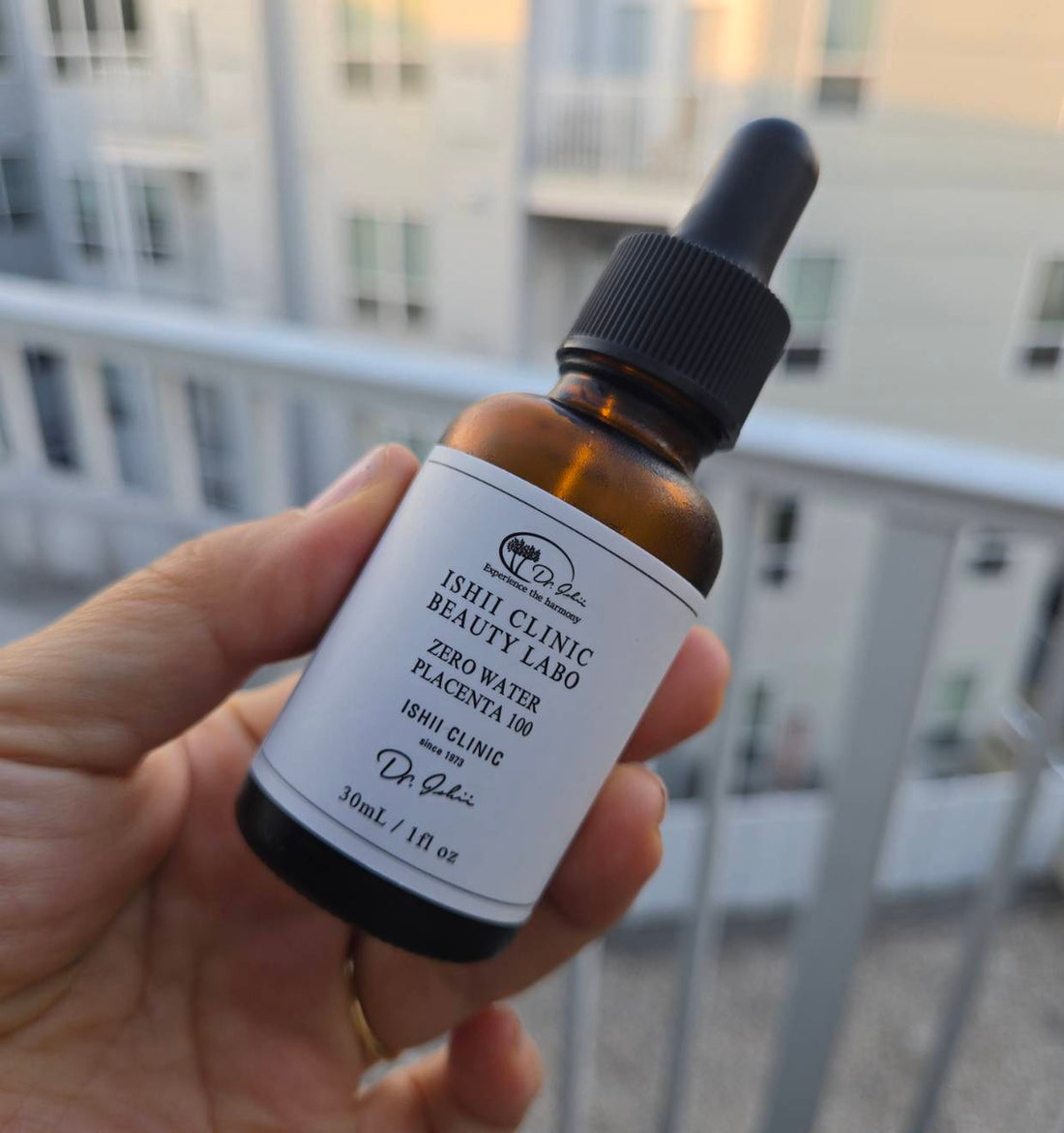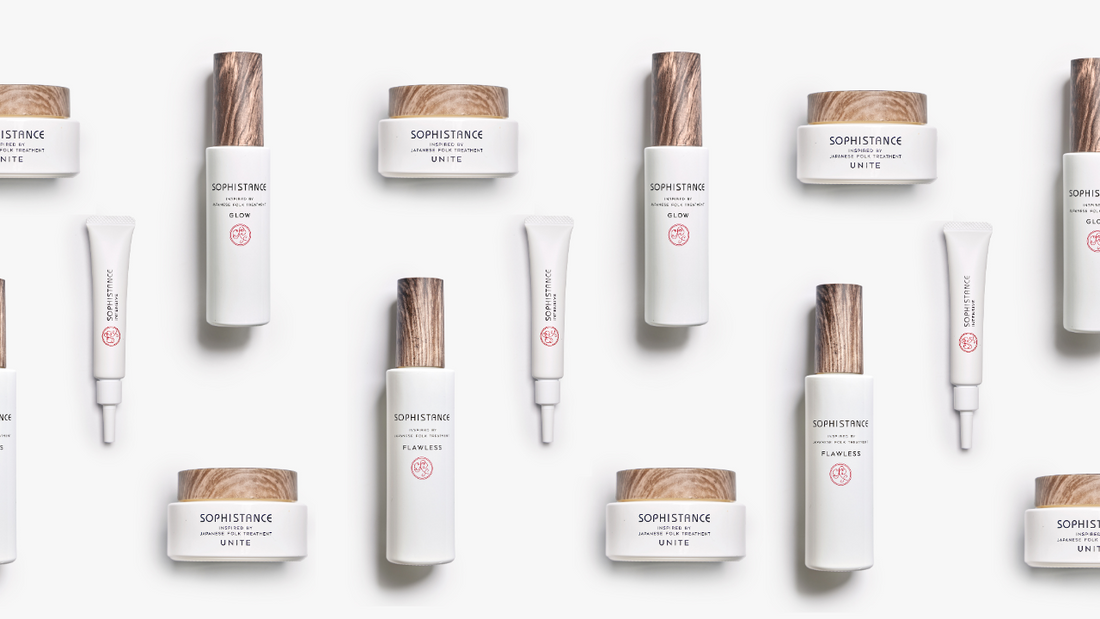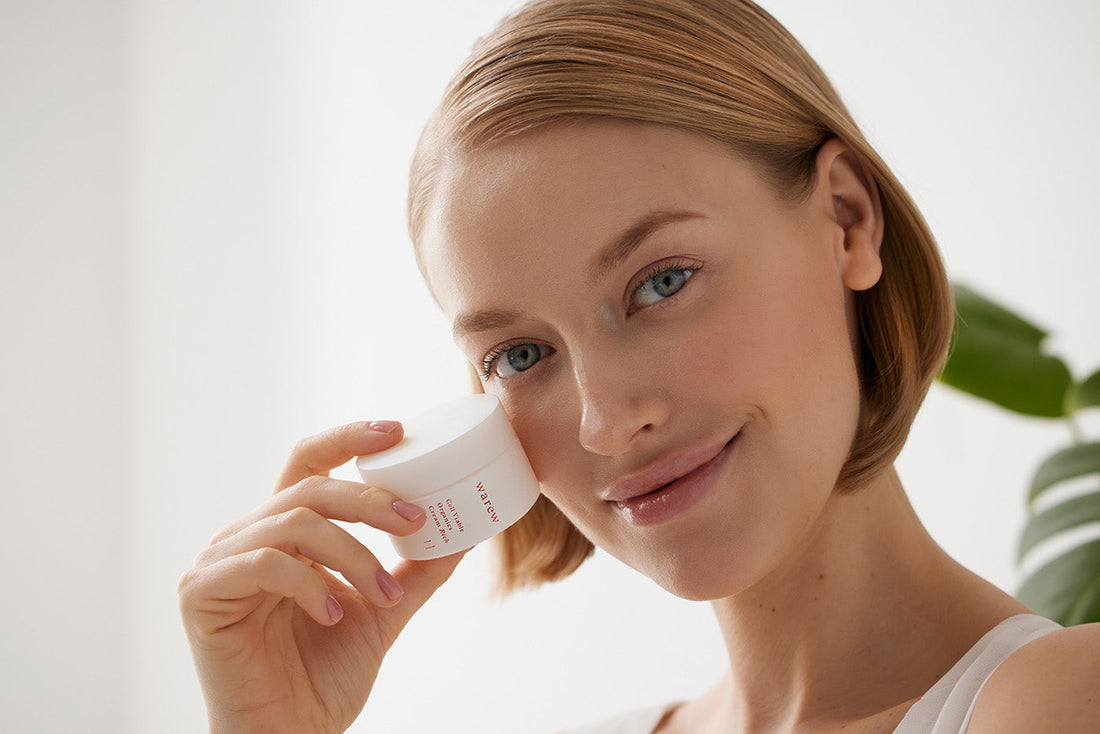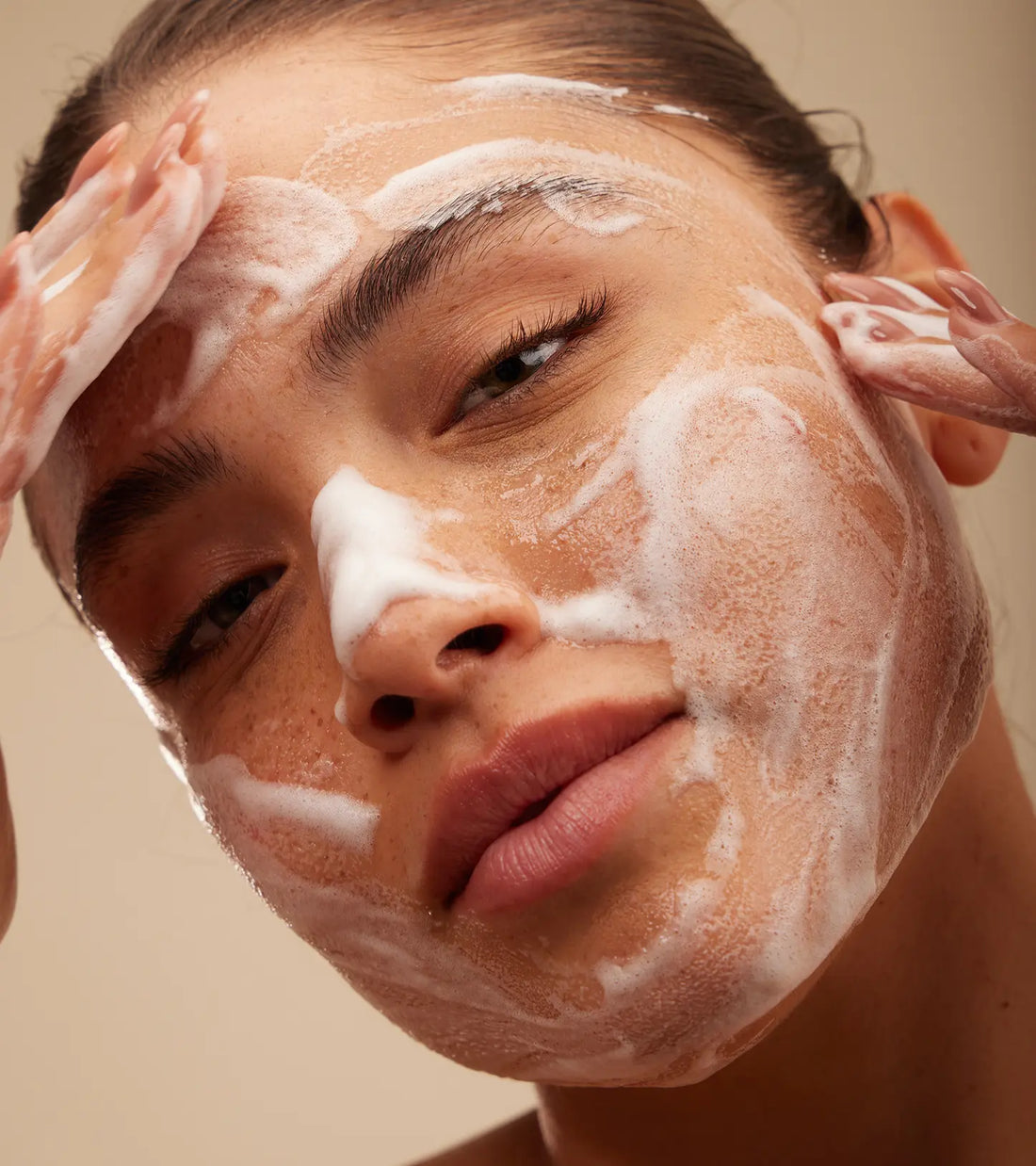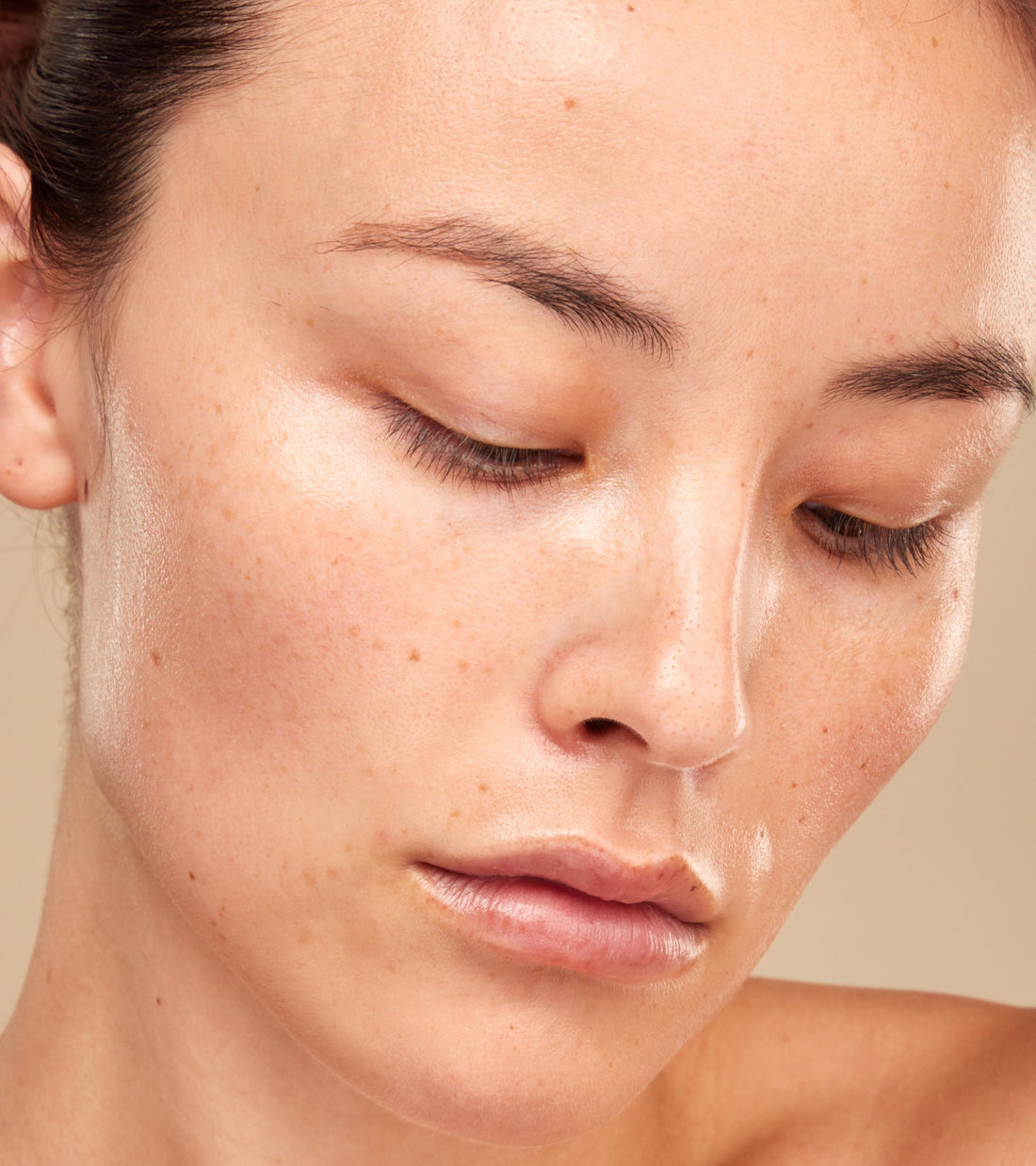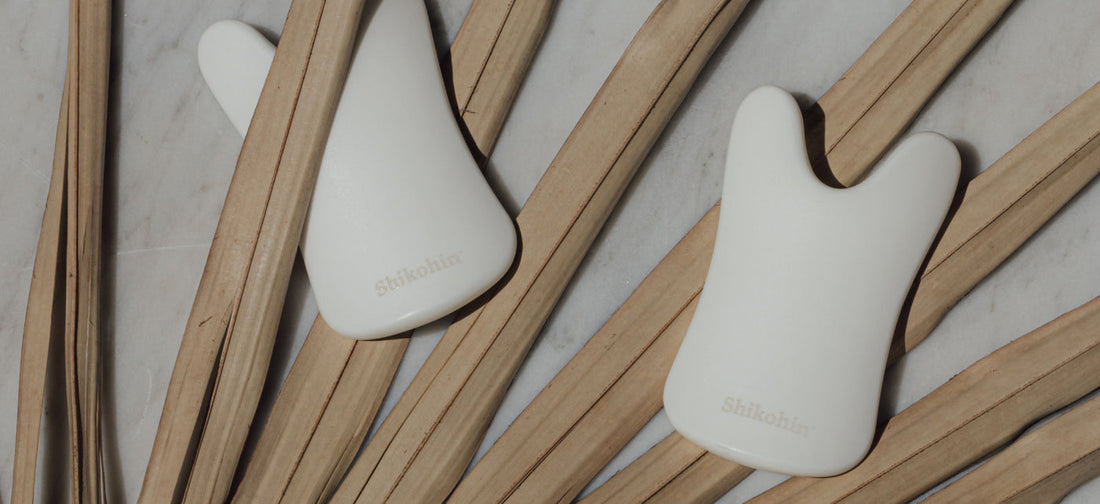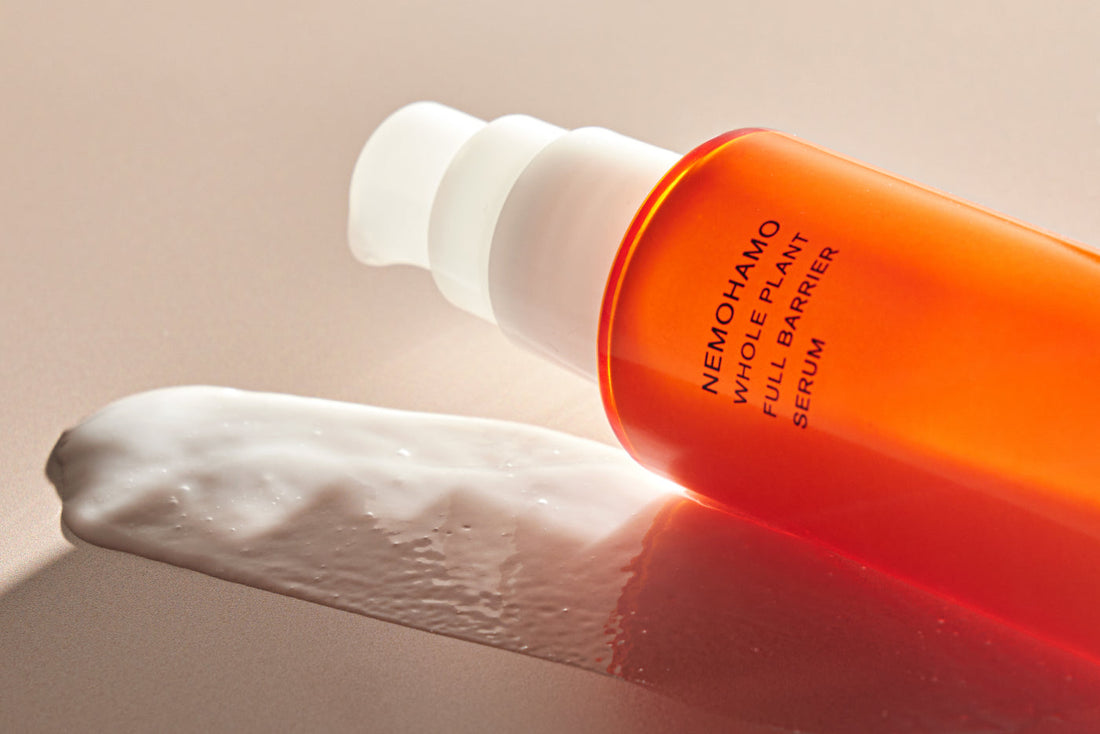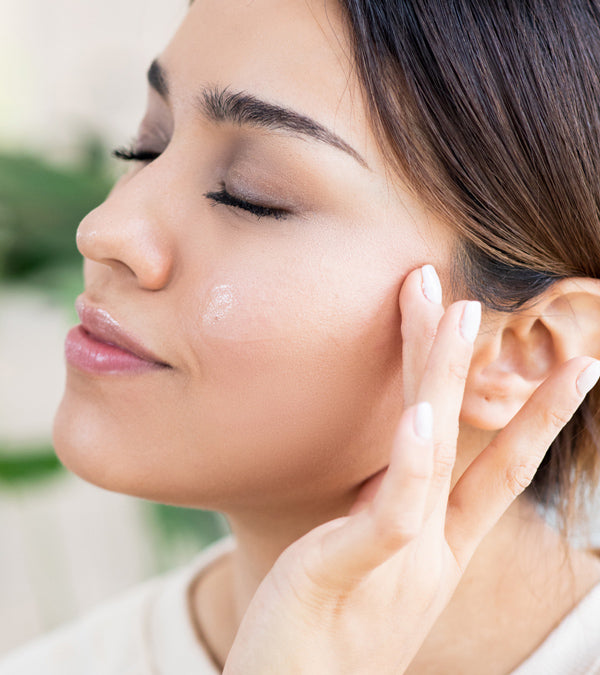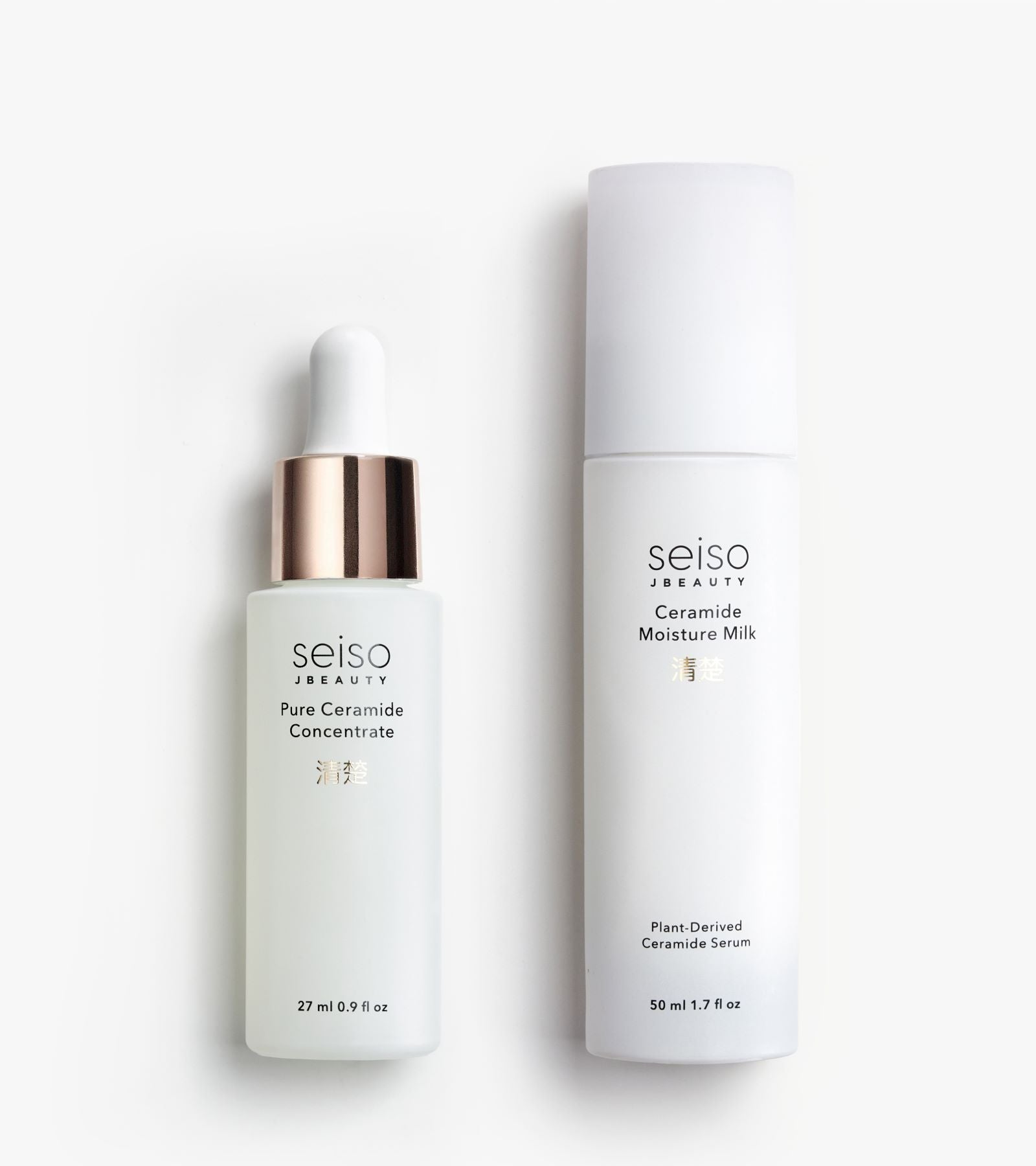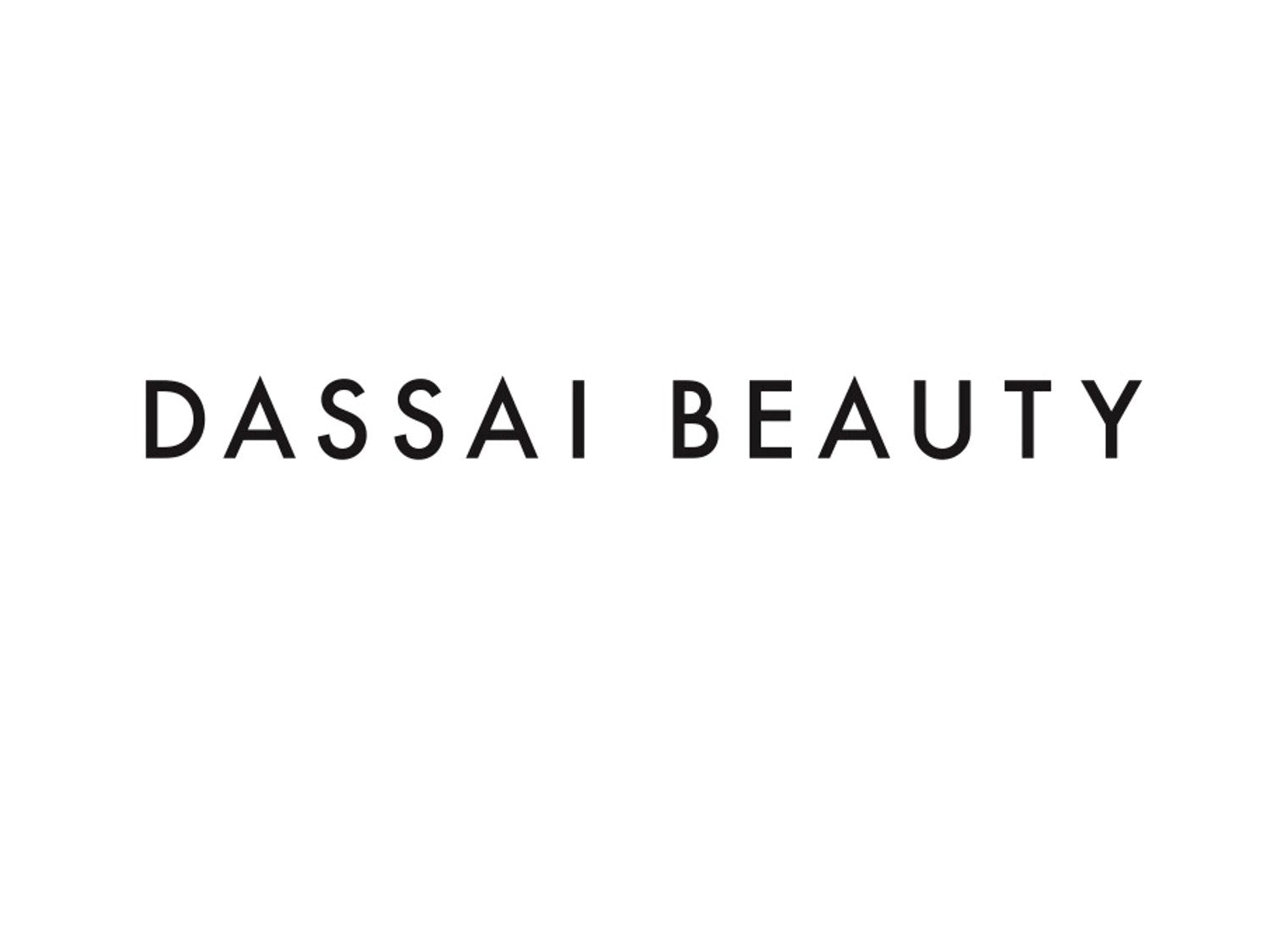How to Tell if You Have an Oily Skin Type
Oil, or sebum, is an essential component of skin health that is present regardless of skin type. We all naturally produce sebum, which is composed of triglycerides, waxes, and fatty acids that are secreted by our sebaceous glands to lubricate the skin and help form a protective barrier against harmful microorganisms. However, if your sebaceous glands overproduce sebum, it can throw your skin’s microbiome out of balance and set the stage for all sorts of skincare issues. This sebum overproduction can be caused by hormonal, environmental, or even genetic triggers, and is one of the most obvious signs of oily skin. But while excess oil may be a foundational element of oily skin types, there are variations and other considerations that may be at play, such as with oily vs combination skin, and a lesser-known type called “inner-dry skin”.Often related to aging, inner-dryness is basically an oily condition of dry skin. It presents when skin below the surface is lacking in proper moisture and tries to compensate by producing more sebum. However, because the skin is too dehydrated to absorb it, the excess oil sits along the surface where pores and sebum are more visible. It might be difficult to distinguish inner-dry skin from other oily skin types, so we’ve provided a handy self-checklist to help:
- Your skin is usually sticky, but after cleansing feels tight
- Your skin looks moisturized, but base makeup does not apply well
- Your skin texture is rough, hard and/or stiff rather than plump and moist
- The pores around your nose are open and clogged with sebum
- Skincare products are less able to penetrate the skin and are less effective
If three or more of the above apply, you may be experiencing inner dryness rather than standard oily skin or combination skin.
Why Your Skin Gets Oily in the Summer

Does hot weather cause oily skin? It definitely has an impact. As the temperature rises, your sebaceous glands secrete both sebum and sweat in an effort to help regulate your body temperature. While sweat evaporates, excess sebum effectively melts on the surface leaving greasy skin that is shiny and sticky. Sweating also expels essential moisture from the skin, triggering the sebaceous glands to produce more sebum to help restore moisture retention. For people with oily skin, this creates a vicious cycle of uncontrolled oil production that can lead to clogged pores and blemishes. This double whammy of sweat and sebum is also the main cause of makeup loss/breaking in the summer.
A hot weather-driven cycle can also exacerbate other conditions like maskne and inner-dry skin. In the case of maskne, the environment inside a mask is already warm, humid, and full of friction-causing pressure points. When you add in unchecked oil production, it provides an additional pore-clogging mechanism which encourages bacteria to thrive and create breakouts.
For inner-dryness, environmental factors like UV rays and air conditioning can leech moisture from the skin and cause the sebaceous glands to ramp up oil production; even people who may have always had oily skin can start to experience inner-dry skin due to stay-at-home situations with increased exposure to air conditioning. While the skin appears moist, its inherent dehydration and disrupted moisture barrier leaves it unable to reclaim that moisture—perpetuating the same cycle as oily skin despite different underlying causes.
Japanese Beauty Advice for Oily Skin

According to Estee Lauder research, Japanese people on average produce about 20% more sebum than people of western ethnicities. This difference is thought to be due in part to Japan's seasonal rains and hot, humid summers, which may affect development of sebaceous glands during childhood. With such a common, nation-wide skincare challenge, it stands to reason that Japan would have developed some of the best practices and solutions for getting oily skin under control.
One big component of these methods (indeed, a central principle of Japanese beauty in general) is that skin health is an extension of overall health—everything is connected. The idea that self-care represents an individual journey of holistic wellness is what makes J-Beauty different from beauty ideologies of other cultures—and it also explains why J-Beauty provides some of the best ways for developing a pathway to your best self via healthy skin. The key is using simple rituals with powerful ingredients as part of a sustainable, daily routine. The Japanese culture abides by the wabi sabi flawed beauty ideal to stress that perfect skin is impossible to achieve, but we can certainly work to prevent popular skin issues in our daily lives. Here are some basic tips that can help turn an otherwise stressful summer of oily skin into a season of self-care:
1. Keep Your Face Clean

Oftentimes, oily skin conditions are intensified by misguided attempts to get rid of excess oil. Too much face washing can strip away vital amounts of oil that then triggers the sebaceous glands to keep producing more. In the case of inner-dry skin, excess sebum production leaves skin prone to a thickening of the natural keratin layer (hyperkeratosis) which makes it difficult for moisture to penetrate. It’s important to prioritize gentle, but effective cleansing just a couple of times a day to help remove dead skin cells and make it easier for moisturizing ingredients to get into the skin and work their magic.
- Gently wash your face with lukewarm water, without rubbing or scrubbing
- Look for ingredients that clear pores while also providing lasting hydration
- Go for a light foam cleanser that doesn’t contain excess oil
- Only wash your face once or twice a day
2. Maintain Sufficient Moisture and Oil

Whether you’re cleansing or moisturizing, it’s important to find products that provide adequate moisture so your skin stays hydrated enough to prevent the sebaceous glands from triggering more oil production. This should happen throughout the day as your moisture needs change due to activity or environment. While you may be tempted to apply a quick lotion and move on, that may not be enough to sufficiently hydrate skin; over time, excess sebum production will reactivate. Instead, focus on protective care that prevents moisture from escaping in the first place.
- Do not skip on moisturizer, even for sticky areas (it’s essential for retaining moisture provided by toners and essences)
- Cotton packs, face packs, and on-the-go care items like mist lotions are a must
- Look for ingredients that fight blemishes and oil production
- Adjust your routine as needed for the changing seasons (lighter formulas in the warmer months, richer ones in the winter, etc.)
- Spread thinly if you’re worried about stickiness or heaviness
3. Don't Touch Your Face Too Often

Part of keeping your face clean is ensuring that you don’t touch it too often. Not only can you transfer dirt and bacteria onto your face (which can lead to blemishes), but any additional stimulation can disrupt the moisture balance of your skin and encourage excess sebum production. However, it is still important to be conscious of your moisture levels during the day (especially if you spend time in low-humidity environments like an office) and continue to moisturize your skin even over makeup.
- Use tissues as they are less drying than oil-absorbing paper and efficiently blot excess oil while still leaving your skin smooth and moderately moist (you can easily eliminate shine and stickiness from your skin with a single tissue)
- Avoid using oil-absorbing paper as much as possible
- When applying products throughout the day, use clean hands to press into skin and then blot with a tissue to prevent moisture from evaporating
- Use an oil-cut lotion to prevent makeup from falling off
4. Try Not to Sweat the Small Stuff

While having oily skin might seem like a negligible disruption in the overall function of one’s body, it can actually have a tremendous negative emotional impact. In fact, a recent study found that people with oily skin felt self-conscious and preoccupied about their skin daily, with a persistent urge or compulsion to wash or blot their skin. This type of constant stress, compounded with all the stress that comes from work and other daily challenges, will ultimately affect mental and physical health. This is why it’s so important to address the causes of oily skin and create an effective daily plan that delivers nourishment to skin as well as peace of mind.
- Add calming elements to your self-care routine, like aromatherapy, meditation, or quality time spent in nature
- Go to bed five minutes earlier every day
- Avoid smoking/smoky environments
- Eat well to live well



